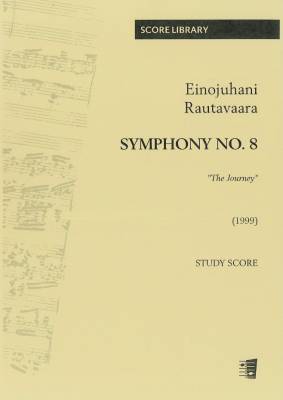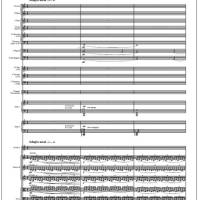Symphony No. 8 "The Journey" - Study score
Rautavaara, EinojuhaniProduct information
| Title: | Symphony No. 8 "The Journey" - Study score | ||
| Authors: | Rautavaara, Einojuhani (Composer) | ||
| Product number: | M042090886 | ||
| Product form: | Sheet music | ||
| Availability: | Delivery in 7-16 days | ||
| Price per piece: | 36,53 € (32,19 € vat 0 %) | ||
|
|||
| Publ. product code: | M042090886 |
| Publisher: | Fennica Gehrman |
| Edition: | 1. edition, 2001 |
| Language: | undefined |
| Pages: | 124 |
| Product family: | Orchestral & stage works Orchestra |
| Finnish library classification: | 78.54 Orkesterit (yleensä enemmän kuin 25 soittajaa) |
| Key words: | orkesteriteokset, sinfoniat |
According to Milan Kundera, symphonic music is a journey through the world, through ever-changing landscapes. It can, according to Rautavaara, also be a journey through human life. The title of the 8th symphony,"The Journey", also had a concrete reason; one of the motifs in the third, slow movement is sung in Rautavaara's opera Thomas to the words "This journey goes on... whose is it? - Of one who wanders from the end of the journey? ...beyond time?...".
The symphony (1999) is in four movements. The first is peaceful, proceeding in long sweeps. The symphony having been commissioned by the Philadelphia Orchestra, Rautavaara was able to make the second movement an extremely virtuosic, technically demanding scherzo. The third movement is a slow, poetic episode beginning and ending with the 'signature' motif. The finale is a broad stream. Einojuhani Rautavaara's large-scale works have almost always ended in silence. According to the composer, the 8th symphony nevertheless wanted to end fortissimo - con grandezza.
This product is a study score (size A4, spiral bounding). The orchestral material is available for hire from the publisher.
Duration: 25'
Instrumentation:
3(III=picc)3(III=ca)3(III=bcl)3(III=cfg)-4431-12-2hp-str
The symphony (1999) is in four movements. The first is peaceful, proceeding in long sweeps. The symphony having been commissioned by the Philadelphia Orchestra, Rautavaara was able to make the second movement an extremely virtuosic, technically demanding scherzo. The third movement is a slow, poetic episode beginning and ending with the 'signature' motif. The finale is a broad stream. Einojuhani Rautavaara's large-scale works have almost always ended in silence. According to the composer, the 8th symphony nevertheless wanted to end fortissimo - con grandezza.
This product is a study score (size A4, spiral bounding). The orchestral material is available for hire from the publisher.
Duration: 25'
Instrumentation:
3(III=picc)3(III=ca)3(III=bcl)3(III=cfg)-4431-12-2hp-str





